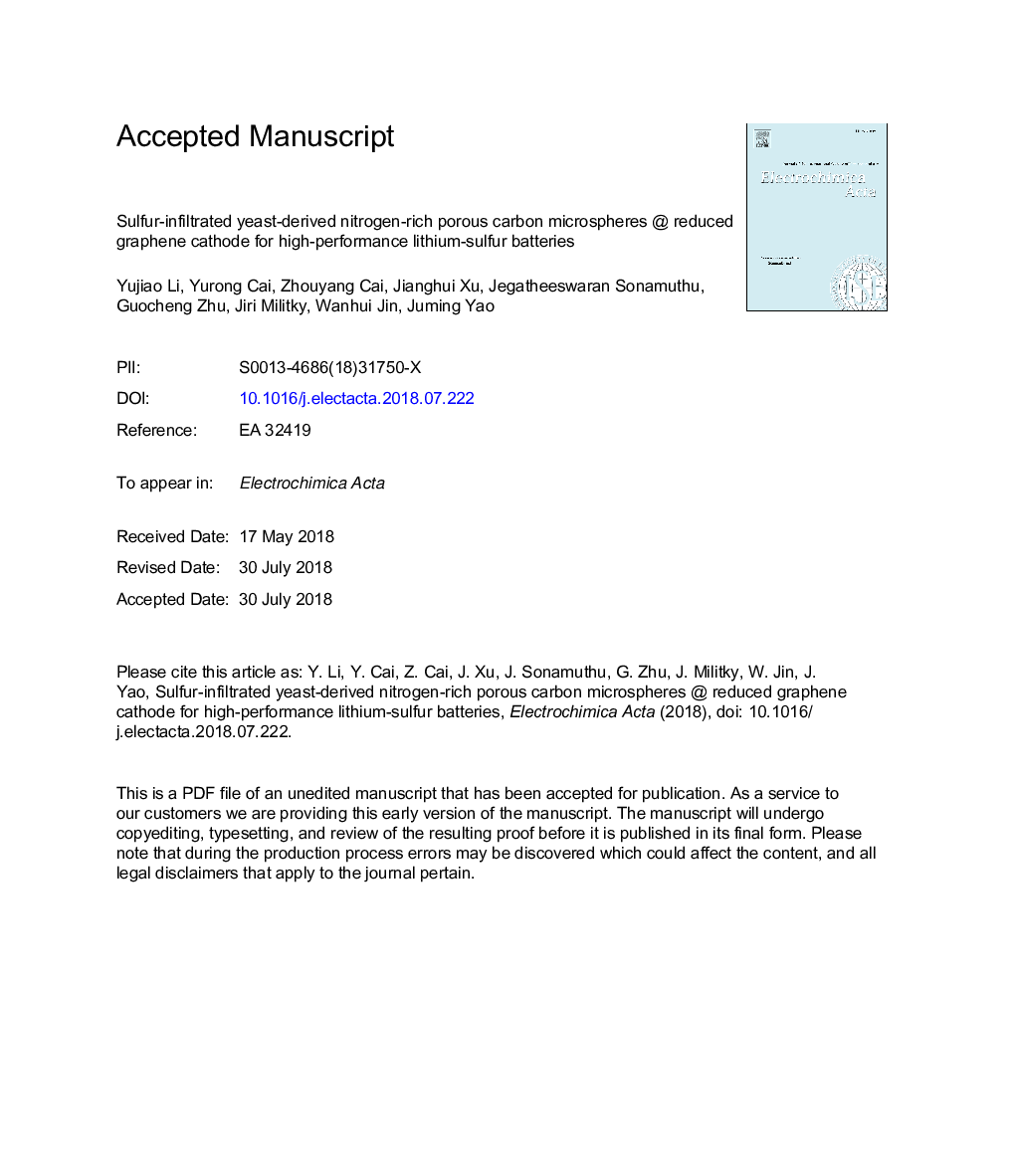| Article ID | Journal | Published Year | Pages | File Type |
|---|---|---|---|---|
| 6601831 | Electrochimica Acta | 2018 | 32 Pages |
Abstract
The defects of polysulfide dissolution and sulfur insulating causes in Li-sulfur batteries have effectively diminished by immobilizing sulfur in porous carbon microspheres via the interactions of doping-nitrogen and encapsulating-reduced graphene. The nitrogen-rich porous carbon microspheres were prepared by using yeast as natural precursor and high content of nitrogen (up to 8.52%) doped carbon microspheres was confirmed by the elemental analysis. As cathode for lithium-sulfur batteries, the rGO@HYC/S composite exhibits a high retention capacity of 921â¯mAâ¯hâ¯gâ1 at 0.2â¯C and 675â¯mAâ¯hâ¯gâ1 at 1â¯C over 200 cycles. The battery delivers low capacity decay rate of 0.09% and stable coulombic efficiency about 98% at 1â¯C during the 200 cycles. Further, we reveal that the enhanced electrochemical performance is ascribed to a hollow porous structure of carbon framework for sulfur storage, carbon matrix exerted by nitrogen-doping for polysulfide adsorption, rGO wrapper for polysulfide interception and conductivity improvement.
Related Topics
Physical Sciences and Engineering
Chemical Engineering
Chemical Engineering (General)
Authors
Yujiao Li, Yurong Cai, Zhouyang Cai, Jianghui Xu, Jegatheeswaran Sonamuthu, Guocheng Zhu, Jiri Militky, Wanhui Jin, Juming Yao,
